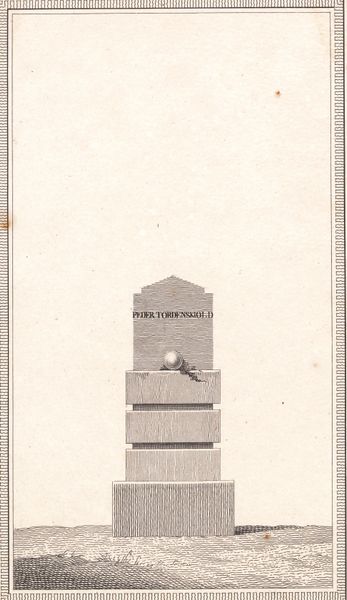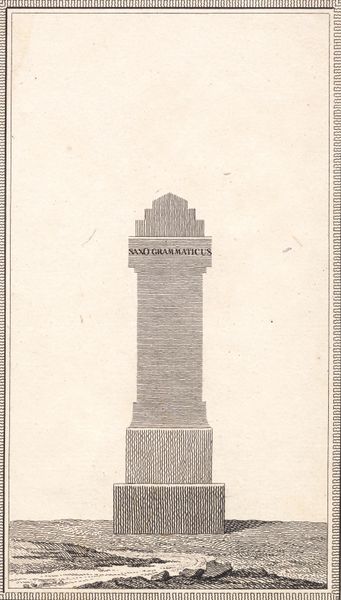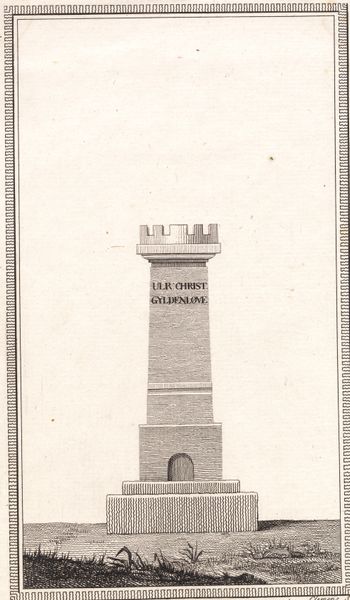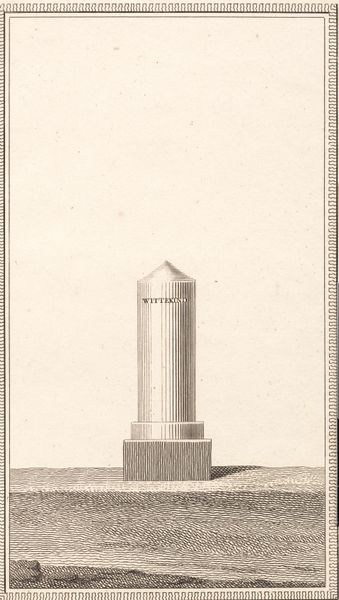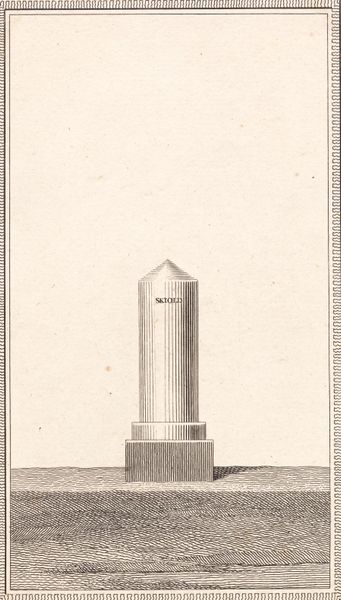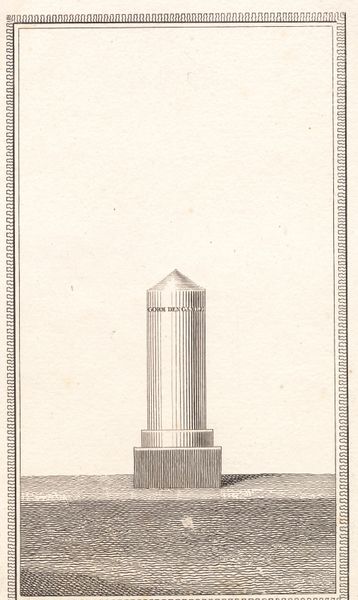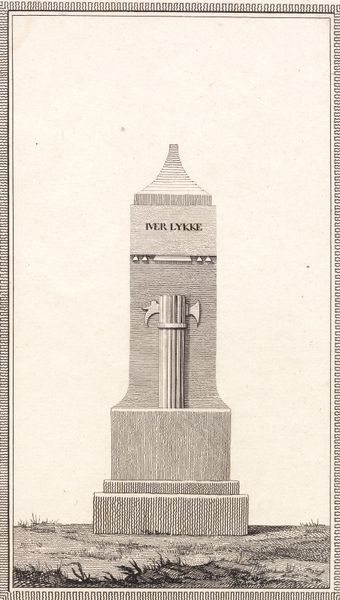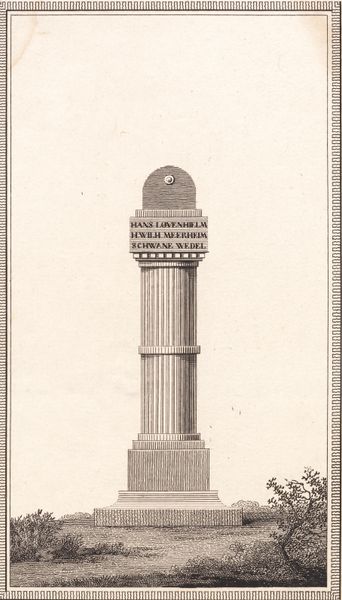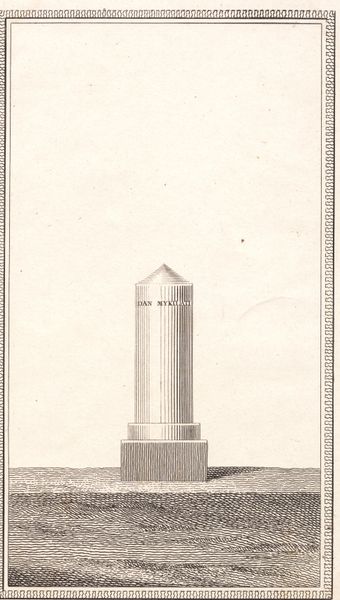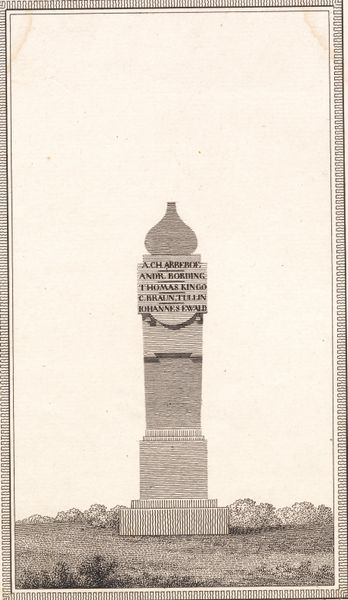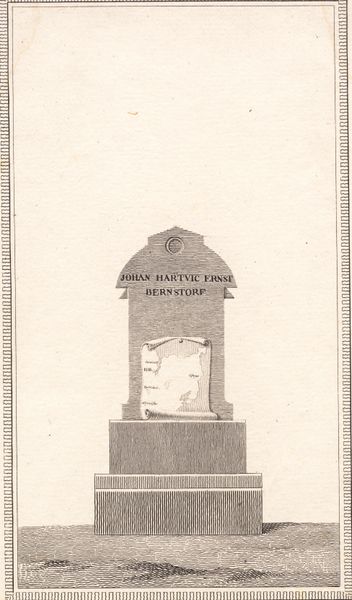
Dimensions: 178 mm (height) x 103 mm (width) (billedmaal)
Editor: So, this is "Peder Colbjørnsen & co.," an etching and engraving made between 1779 and 1781 by J.F. Clemens. It depicts what seems to be a crumbling monument. It has quite a somber feel to it. What do you see in this piece, especially regarding the monument's symbolism? Curator: The ruin is a powerful symbol itself. Throughout history, ruins have served as _memento mori_, reminding us of the transience of life and worldly achievements. What kind of cultural memory is being preserved, do you think? Is it a heroic tale, or a cautionary one? Editor: Well, given the namesake on the monument, I assume it is intended as a heroic portrayal. But the dilapidated state seems to contradict that, somewhat undermining the glorification. Curator: Precisely. It also raises questions about cultural memory. The image may ask, “How long will even the grandest achievements last?" The etching medium itself suggests the fragility of memory. But how are prints typically used? And could it be considered as preserving a legacy? Editor: Good point. Prints were widely distributed. Perhaps this ensures Colbjørnsen's legacy, even as the monument crumbles. A visual reminder distributed widely. Curator: Exactly! So, although time may erode stone, perhaps it cannot erase memory – especially when that memory is etched and replicated. Even in ruins, the idea of Colbjørnsen remains. Editor: It is fascinating to consider how the artist uses decay to grapple with concepts of enduring legacy. I appreciate your insight. Curator: And I yours! Thinking about the image this way shows the enduring power of symbolic representation to convey complex cultural meanings, even through something as simple as a crumbling brick.
Comments
No comments
Be the first to comment and join the conversation on the ultimate creative platform.
